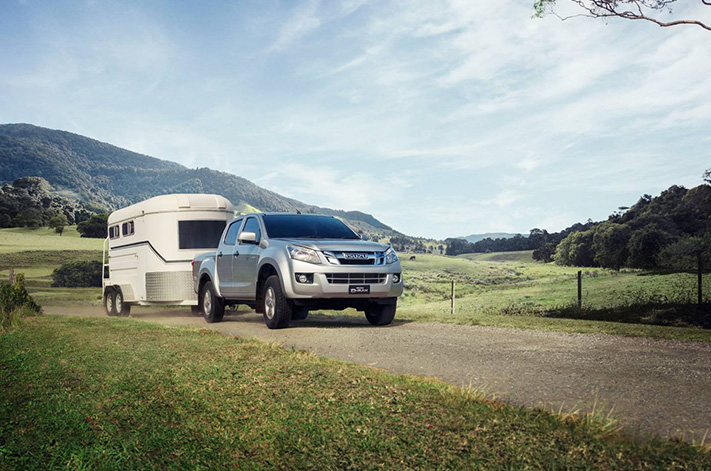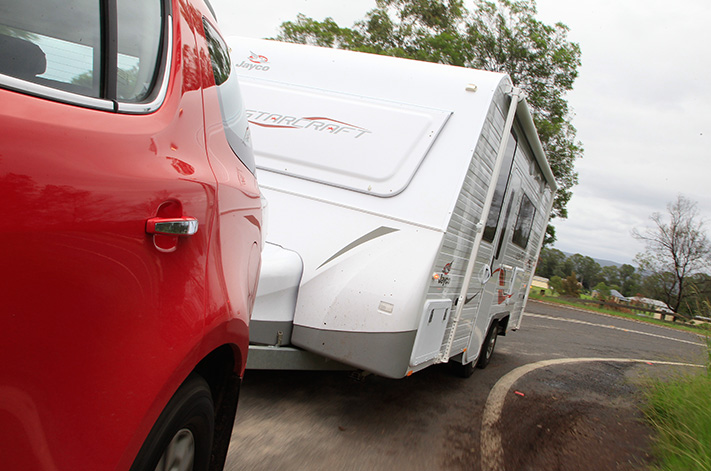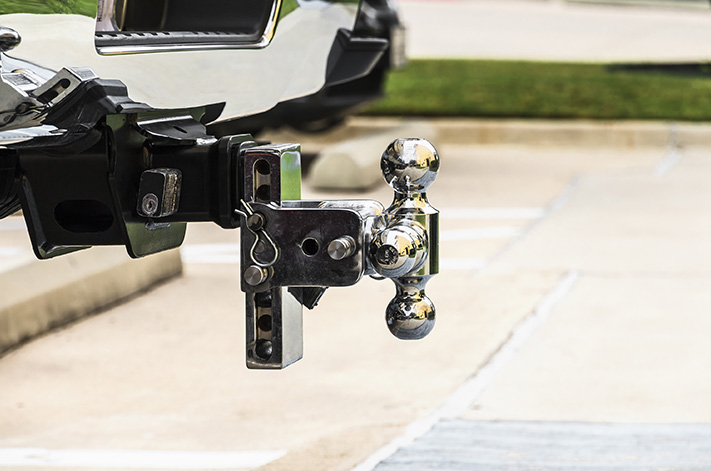
CONNECTING a trailer to a vehicle often evokes feelings of panic to the inexperienced – don’t even mention backing one in.
So to help ease the stress associated with connecting and towing a trailer/caravan, we’ve deciphered a few hauling essentials.
UNDERSTAND THE BASICS
Before you load up your rig and caravan/trailer and chase sunsets into the great unknown, it’s best to understand the towing basics – in particular, GVM, GCM and payload.
GVM (Gross Vehicle Mass) is how much a vehicle can weigh when it’s fully loaded; GCM (Gross Combination Mass) is the towed weight added to the weight of the vehicle, plus any payload; a payload includes the driver, passengers, equipment and any gear fitted to the vehicle.

Most popular dual cab 4x4s – Ranger, D-MAX, BT-50 – feature a towing capacity of 3500kg, but, more often than not, that doesn’t always mean you should tow to that limit – once you take into account occupants, luggage and aftermarket accessories fitted to the tow rig, you’re often left with only a portion of the total amount.
| Step-by-step guide to towing a trailer safely
It’s a different matter if you forgo the kids and family pet, but, that’s not always a good idea, however tempting it may sound.
WEIGHT DIFFERENCE
Choosing the correct set-up depends entirely on what you’re towing. For example, if you’re towing a trailer-full of garbage to the tip in your family sedan, then you’ll need a different hitch to, say, towing a caravan across the great red.

This is where hitch classes come into play. Hitch classes are broken up into five categories, and are distinguished by the total weight they are capable of towing. A hitch class 1, for example, would be for your local tip run with a gross trailer limit of 2000lbs (900kg). While a hitch 4/5 is the heaviest class and can theoretically tow up to 18,000lbs (8160kg) – but you’d obviously need a suitable, extreme-powered tow rig (think industrial equipment).
TOW BALL v PINTLE HITCH
Towing a heavy load doesn’t just involve a proper hauler and a heavy duty trailer, you also need something strong connecting the two. So, if you’re towing something with a bit of weight behind it, you’ll need to upgrade your hitch to something slightly more hardcore.
Most standard vehicles come equipped with a 50mm tow ball, which are lightweight and easy to use for day-to-day activities, making them ideal for recreational use.

A Pintle hitch is stronger by nature and is better suited to heavy duty towing, namely for lugging industrial equipment. With a basic hook-and-loop Pintle hitch, the hook mounts to a lunette ring, while the loop is attached to the trailer. They’re simple in construction and work best on rougher terrain.
WEIGHT-DISTRIBUTION HITCH
A weight-distribution hitch can be a handy piece of kit to prevent the rear of the tow vehicle from sagging when it’s lugging a heavy load. The hitch can alter tow ball heights and evenly distribute weight across all the trailer and tow rig wheels. Ideally, these are recommended when towing heavier loads.
| Top 10 caravan tow vehicles for 2016
Get the set-up right for the weight your carrying and you’ll be secure in the knowledge that you’ll reach your destination safely, intact and on time – then it’s just a matter of securing a campsite for the night!



